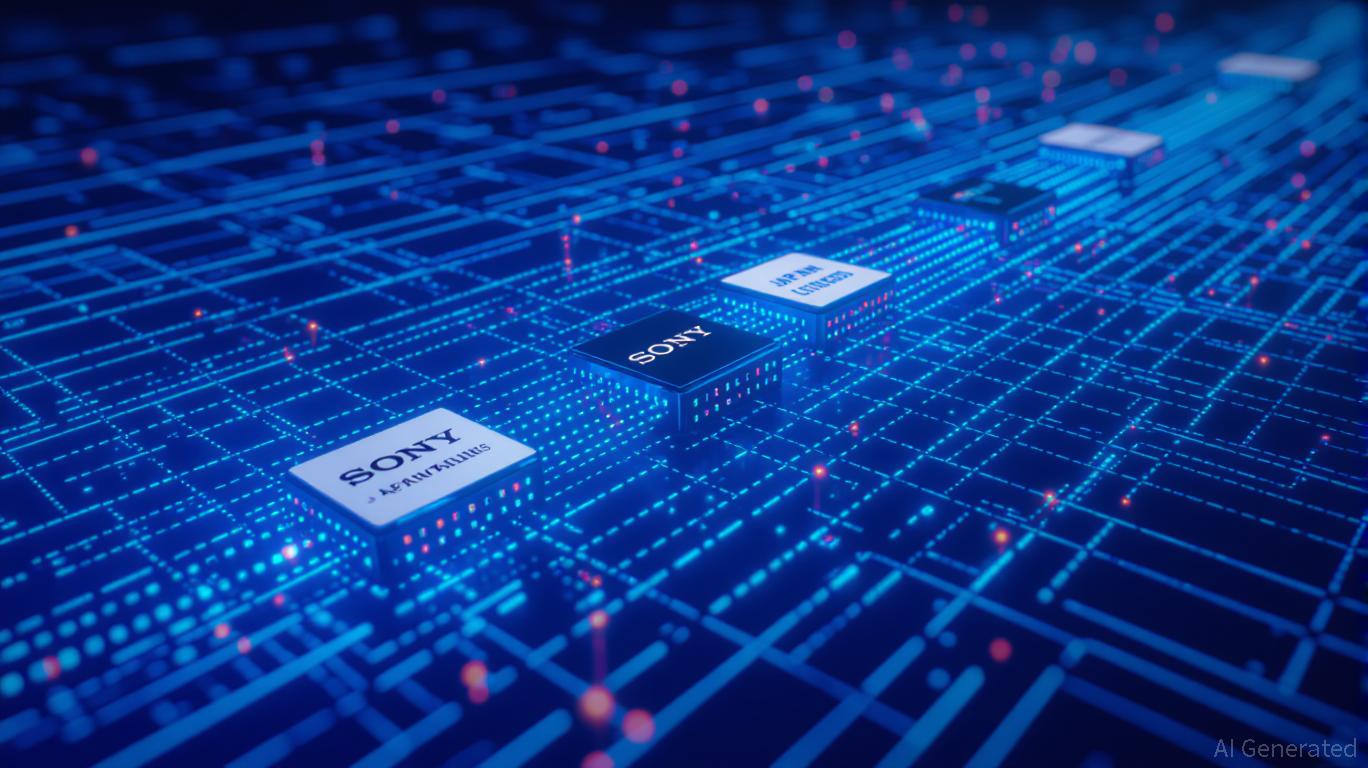Astar 2.0 Debut and Its Impact on the Blockchain Landscape
- Astar 2.0 emerges as a strong contender in institutional blockchain adoption through Polkadot-based scalability and interoperability innovations. - Institutional confidence grows with $3.16M ASTR purchase, 20% QoQ wallet growth, and partnerships with Sony , Casio, and Japan Airlines. - Astar's 6-second block time, 150k TPS throughput, and Chainlink CCIP integration contrast with Bitcoin/Ethereum's scalability struggles and ETF outflows. - Projected $0.80–$1.20 ASTR price by 2030 hinges on Evolution Phase
Technological Innovations: Astar 2.0's Competitive Edge
By implementing Polkadot’s asynchronous backing protocol, Astar 2.0 has dramatically improved its operational efficiency. With block times reduced to 6 seconds and throughput reaching 150,000 transactions per second (TPS),
Additionally, Astar’s partnership with

Institutional Adoption: Astar's Growing Appeal
Interest from institutional players in Astar 2.0 has accelerated in 2025,
These achievements contrast sharply with the difficulties faced by Bitcoin and Ethereum ETFs, which saw notable capital outflows in 2025. For example, Ethereum ETFs experienced $210.43 million in withdrawals over five days, while Bitcoin ETFs lost $543.59 million in just three days,
Market Dynamics and Future Roadmap
Although ASTR’s current market value is still modest compared to Bitcoin and Ethereum—as of 2025—it holds a promising long-term perspective.
The Startale App, scheduled for rollout in early 2026, will centralize ASTR management and ecosystem engagement, while the Plaza integration will boost interoperability throughout the
Challenges and Considerations
Despite its advantages, Astar must contend with certain challenges.
Conclusion: Astar 2.0 and the Future of Institutional Investment
Astar 2.0’s technological flexibility, rising institutional support, and strategic vision make it a strong contender to outperform legacy cryptocurrencies over time. While Bitcoin and Ethereum continue to face hurdles with scaling and regulation, Astar’s emphasis on enterprise applications and interoperability presents a compelling alternative for institutions aiming to safeguard their investments for the future. As the Web3 space evolves, Astar’s success in connecting blockchain advancements with practical use cases will likely be key to its role in transforming institutional investment.
Disclaimer: The content of this article solely reflects the author's opinion and does not represent the platform in any capacity. This article is not intended to serve as a reference for making investment decisions.
You may also like
Ethereum Latest Updates: Major Institutions Support Ethereum's Supercycle, While Technical Experts Raise Concerns
- Tom Lee predicts Ethereum's "supercycle" driven by institutional adoption and DeFi growth, sparking market debate over valuation risks. - SharpLink Gaming's 1,100% revenue surge and $200M ETH allocation to Linea highlight bullish institutional strategies amid price volatility. - Technical analysts warn ETH's $3,500 support is critical after breaking below key channels, with $37B daily volume reflecting mixed momentum. - Growing institutional demand contrasts with critics' concerns over centralization ris

The Rapid Rise of ZEC (Zcash) Value: An In-Depth Technical and Strategic Analysis
- Zcash (ZEC) surged 66.55% in November 2025, peaking at $683.14, driven by treasury initiatives, privacy innovations, and institutional investments. - Cypherpunk Technologies' $50M treasury and Zashi Wallet's privacy swaps boosted demand, while Winklevoss Capital and Grayscale added $72.88M in institutional backing. - Technical indicators show overbought conditions (RSI 94.24) but bullish momentum persists, with derivatives markets holding $1.13B in open interest and a 1.06 long-to-short ratio. - Zcash's

ICP Caffeine AI's Rising Popularity: Ushering in a New Age for Blockchain Investors and AI-Powered DeFi
- Dfinity's ICP Caffeine AI bridges blockchain and AI in 2025, enabling non-technical users to build dApps via natural language prompts. - The platform saw 30% ICP token price growth and $237B TVL in Q3 2025, but faced 22.4% dApp usage decline amid market saturation. - Investors prioritize infrastructure projects like ICP Caffeine AI for AI-driven DeFi scalability and security, contrasting with speculative token trends. - Regulatory scrutiny and user retention challenges persist, but enterprise adoption of

Internet Computer's Rapid Rise: Could This Signal the Next Major Change in Blockchain?
- Internet Computer (ICP) surged in 2025 via DeFi upgrades like Flux (scalability), Stellarator (sharding), and Chain Fusion (cross-chain interoperability with Bitcoin/Ethereum). - Q3 TVL spiked 22.5% to $1.14B, with ICP price rising 45% to $5.20, driven by institutional adoption of AI-tokenized infrastructure and 2,000+ new developers. - Despite growth, DApp engagement dropped 22.4%, highlighting a gap between technical advancements and user adoption, while $12B TVL losses from hacks in November 2025 pose
